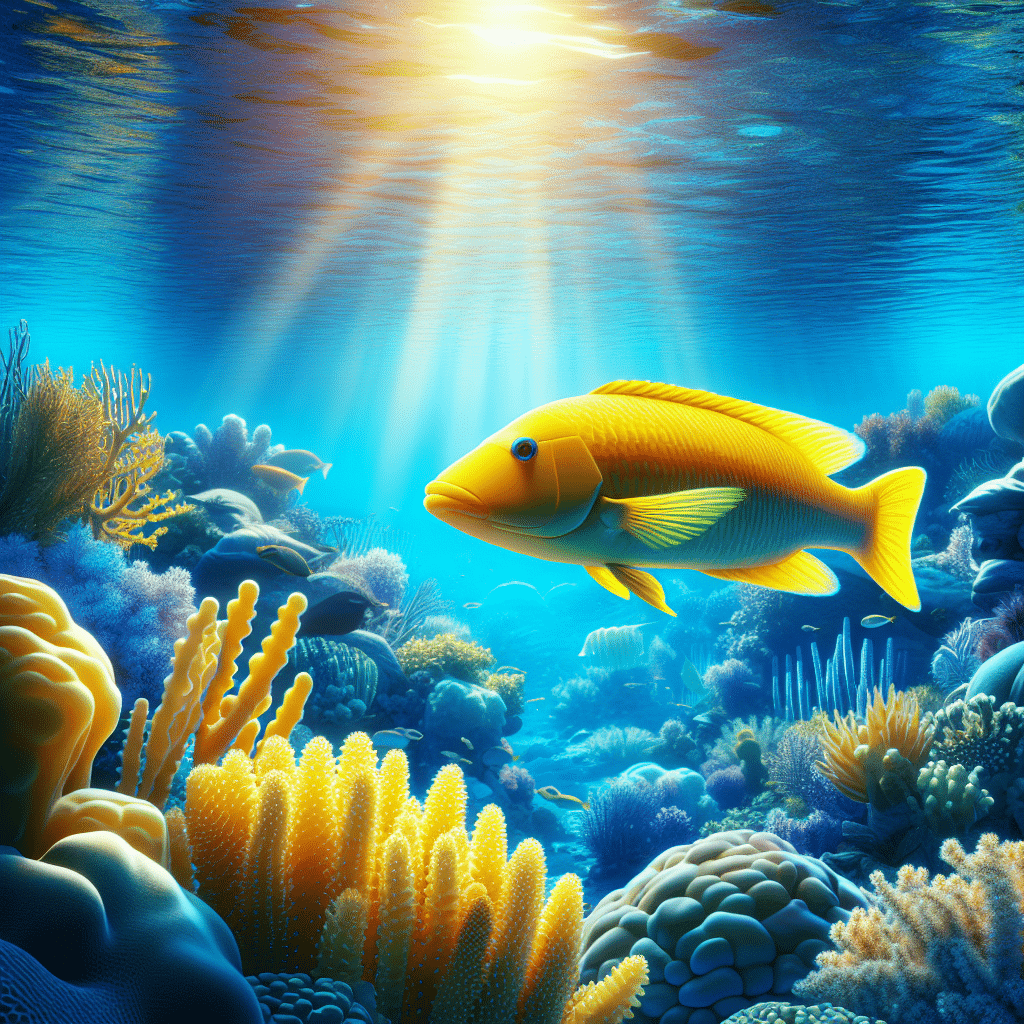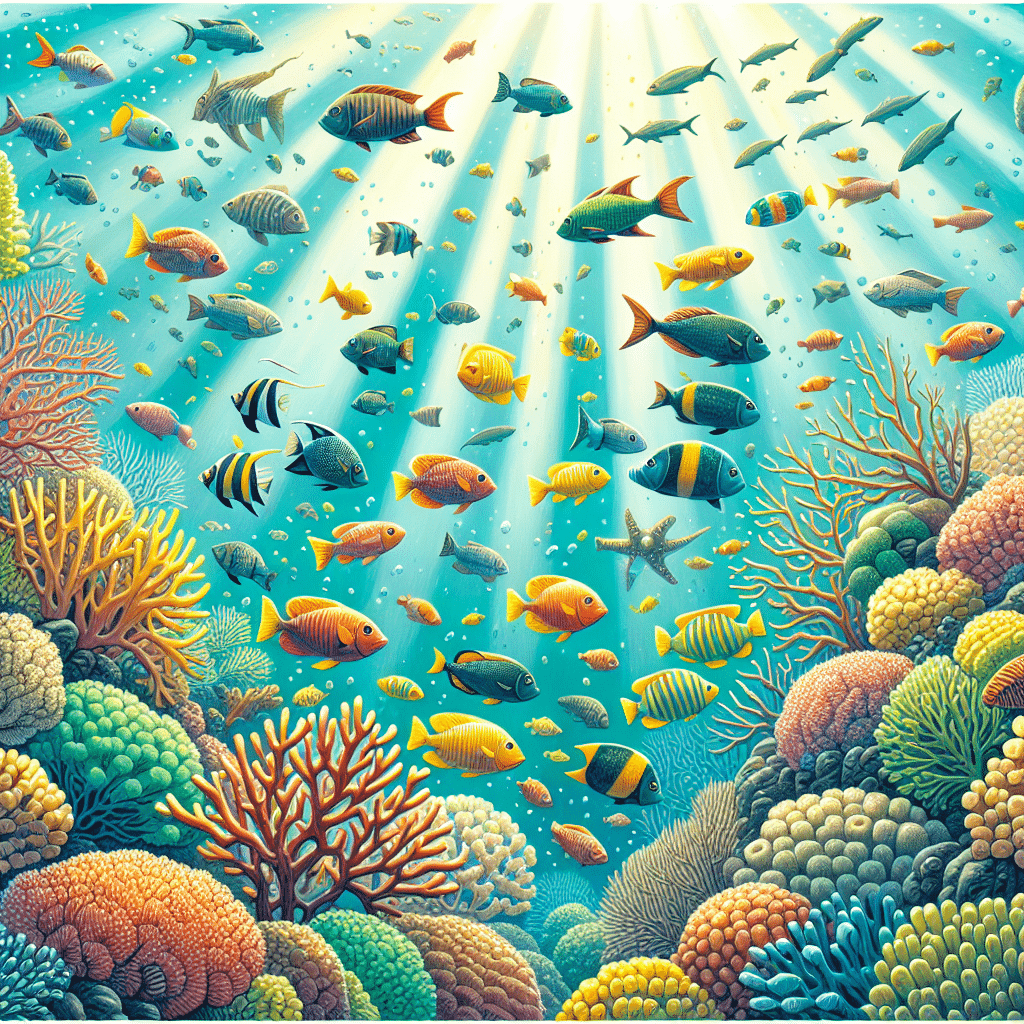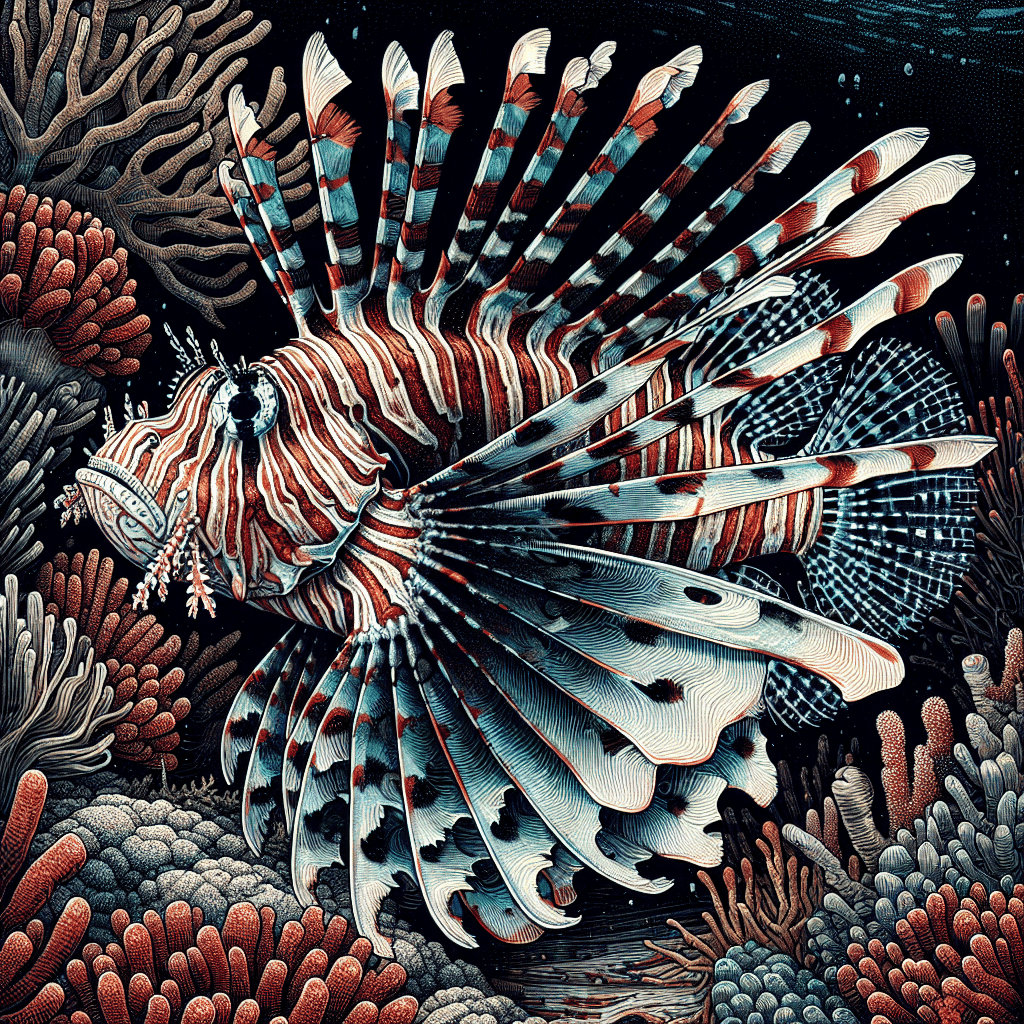The Yellow Coris Wrasse
Introduction to Yellow Coris Wrasse
I find the Yellow Coris Wrasse to be an incredibly vibrant and active fish, making it a favorite among aquarium hobbyists. This species, scientifically known as Halichoeres chrysus, hails from the reefs of the Solomon Islands, Southern Japan, and the Australian Coast. Not only is it visually appealing, but its engaging behavior also adds life to any reef tank. They typically live in small groups and thrive in a well-maintained environment.
Physical Characteristics
The Yellow Coris Wrasse is relatively small, with adult males reaching about 5 inches in length. Juveniles and females are generally smaller, but with a healthy diet and suitable living conditions, they can grow to their ideal size (Light Fish).
One distinctive feature is its all-yellow body, complemented by semi-translucent dorsal, caudal, and pectoral fins. As males mature, they develop unique horizontal stripes that stretch from the mouth, which is quite a sight when they reach sexual maturity around one year of age (Light Fish).
Here’s a quick reference table summarizing some key physical characteristics:
| Characteristic | Description |
|---|---|
| Scientific Name | Halichoeres chrysus |
| Adult Size | Up to 5 inches |
| Coloration | All-yellow body with semi-translucent fins |
| Maturity | Horizontal stripes appear in males at 1 year old |
| Lifespan | 7-8 years in a saltwater aquarium |
With the right care, the Yellow Coris Wrasse can provide both beauty and activity in your aquarium, making it a delightful addition to any reef tank setup. For more insights on caring for various marine fish, check out our articles on marine fish and other fascinating species like the clownfish and tang.
Habitat and Behavior
Natural Habitat
The Yellow Coris Wrasse, scientifically known as Halichoeres chrysus, can be found in the tropical and subtropical waters of the central Indo-Pacific. Its range includes areas like the Christmas Islands, Indonesia, Japan, New South Wales, and the Solomon Islands. I’ve noticed that they prefer to inhabit outside reef slopes, rubble, and sandy areas. Typically, you can find these wrasses at depths of up to 30 meters (Wikipedia).
These fish thrive in environments rich with marine life, where they can forage for food. In their natural habitat, they mainly feed on small marine invertebrates, such as crustaceans, mollusks, and worms, which they capture from the substrate. This makes them quite active and essential members of their reef ecosystems.
Social Behavior
In terms of social behavior, the Yellow Coris Wrasse often lives in small groups. I find it fascinating that they exhibit a benthic predatory lifestyle, meaning they spend a lot of time near the ocean floor hunting for their food. Additionally, they are protogynous hermaphrodites, which means they start their lives as females and can later transition to males as they mature (Light Fish).
The males can be distinguished by unique horizontal stripes that develop when they reach sexual maturity, typically around one year old. This social structure and their ability to change sex help maintain stability within their groups. Keeping an eye on their behavior in a reef tank can provide insights into the dynamics of these small communities.
If you’re ever considering adding a Yellow Coris Wrasse to your aquarium, understanding their natural habitat and social tendencies can greatly enhance your care and feeding practices.
Aquarium Care
When it comes to taking care of my Yellow Coris Wrasse, there are a few key aspects to keep in mind, especially regarding tank size and setup, as well as suitable tank mates.
Tank Size and Setup
For my Yellow Coris Wrasse, it’s essential to have a spacious environment. I recommend a tank size of at least 50 gallons. Larger tanks are even better because they provide more stability in terms of water quality and temperature.
Here are some important setup features:
| Feature | Recommendation |
|---|---|
| Tank Size | Minimum 50 gallons |
| Sandy Bottom | 2-3 inches of fine-grain sand |
| Tight-Fitting Lid | To prevent jumping |
| Well-Filtered | Ensure good water quality |
Having a fine-grain sandbed is crucial since the Yellow Coris Wrasse enjoys sand-sleeping behavior. I also make sure to provide plenty of hiding spots and caves to help them feel secure, especially when they are frightened. Proper acclimation to match salinity and temperature is essential before introducing them to the display tank (Light Fish).
Tank Mates
Choosing the right tank mates for my Yellow Coris Wrasse is vital for maintaining a peaceful aquarium environment. They do well with other peaceful fish, including other wrasses of their kind. Here are some great options for tank mates:
| Compatible Tank Mates | Notes |
|---|---|
| Other Peaceful Wrasses | They can coexist with their species |
| Clownfish | Generally peaceful and compatible |
| Goby Fish | Small and non-aggressive |
| Tang | Active swimmers that get along well |
| Blenny | Another peaceful choice |
It’s best to avoid aggressive species like lionfish or triggerfish, as they may stress out the Yellow Coris Wrasse or compete for space. With the right mix of tank mates, I can create a harmonious environment that allows my wrasse to thrive while keeping my reef tank ecosystem balanced. For more information on compatible species, check out our article on marine fish.
Feeding Habits
Diet Overview
The Yellow Coris Wrasse is known for its carnivorous diet, making it a natural pest control agent in the reef tank. I typically feed my Yellow Coris Wrasse a diet rich in protein, including Mysis shrimp and Brine shrimp. This species thrives when fed at least 3-4 times a day, and I find that a varied diet helps keep it healthy and active. Besides Mysis and Brine shrimp, they are also known to consume flatworms, bristle worms, and nudibranchs, which are common pests in aquariums. Here’s a quick overview of their diet:
| Food Source | Description |
|---|---|
| Mysis Shrimp | A high-protein food that wrasses love. |
| Brine Shrimp | Another favorite; great for daily feedings. |
| Flatworms | Natural pest; helps keep the tank clean. |
| Bristle Worms | Often consumed in well-maintained tanks. |
| Nudibranchs | A tasty treat, though not always common. |
Feeding Frequency
Feeding frequency can vary based on the individual needs of each Yellow Coris Wrasse. For active fish like this, I usually aim for 1 to 5 feedings daily, depending on how active they seem. More frequent feeding can help maintain their energy levels and overall health. It’s essential to monitor their behavior and adjust feeding times accordingly. Here’s a simple guideline:
| Feeding Frequency | Notes |
|---|---|
| 1 time daily | Minimum; may not be sufficient for active fish. |
| 3-4 times daily | Ideal for maintaining health and energy. |
| 5 or more times | For particularly active or growing individuals. |
With proper care and a well-balanced diet, my Yellow Coris Wrasse thrives in the aquarium, contributing to the health of the reef ecosystem. If you’re looking to learn more about compatible fish for your tank, check out my article on marine fish.
Lifespan and Growth
Lifespan in Captivity
The Yellow Coris Wrasse is known for its impressive lifespan, particularly in a well-maintained aquarium. With proper care, I’ve learned that these fish can live up to 7-8 years in a saltwater environment, which is longer than many other wrasses. A stress-free habitat with pristine water conditions plays a crucial role in maximizing their longevity (Light Fish).
| Lifespan in Captivity | Average Lifespan |
|---|---|
| Yellow Coris Wrasse | 7-8 years |
Growth and Size
When it comes to growth, the Yellow Coris Wrasse is relatively small. Adult males typically reach a maximum size of around 5 inches, while juveniles and females are usually smaller. To encourage healthy growth, it’s important to provide a nutrient-rich diet and a suitable environment (Light Fish).
| Growth and Size | Adult Male Size | Juvenile/Female Size |
|---|---|---|
| Yellow Coris Wrasse | Up to 5 inches | Smaller than 5 inches |
By understanding the lifespan and growth patterns of the Yellow Coris Wrasse, I can better cater to their needs in my reef aquarium. Proper care, a balanced diet, and optimal living conditions will help ensure these vibrant fish thrive in my tank. For more insights into other marine fish, check out our articles on marine fish or learn about other wrasses like the six line wrasse.
Aquarium Compatibility
Peaceful Nature
I really appreciate the peaceful nature of the yellow coris wrasse. This fish is known for getting along well with a variety of tank mates, making it a great choice for community reef aquariums. Its friendly demeanor allows it to coexist with other non-aggressive species without causing any stress. This wrasse also plays a beneficial role in the aquarium by preying on pest organisms and parasites, which helps maintain a healthier environment for corals and other tank inhabitants (Light Fish).
Suitable Tankmates
When selecting tank mates for the yellow coris wrasse, it’s essential to consider fish that share a similar temperament. Here’s a list of some suitable tank mates that can thrive alongside this wrasse:
| Fish Species | Compatibility Notes |
|---|---|
| Clownfish | Friendly and non-aggressive |
| Blue Tang | Peaceful and vibrant addition |
| Royal Gramma | Small and docile |
| Lawn Mower Blenny | Great algae eater, peaceful |
| Six Line Wrasse | Compatible, same species group |
| Firefish | Peaceful and colorful |
| Goby | Small and non-aggressive |
| Butterfly Fish | Generally peaceful |
| Parrotfish | Compatible in larger setups |
| Cleaner Wrasse | Mutual benefit, parasite removal |
Choosing the right companions enhances the overall dynamics of your aquarium. The yellow coris wrasse thrives in a well-balanced environment, and its peaceful nature makes it an ideal candidate for your reef tank. To ensure a harmonious community, avoid aggressive species like the barracuda (barracuda) or lionfish (lionfish), as they can create a stressful atmosphere.
By keeping these compatibility preferences in mind, I can create a thriving aquatic environment that showcases the beautiful behavior of the yellow coris wrasse while ensuring the well-being of all tank inhabitants.
Care Tips and Recommendations
Tank Requirements
When setting up an aquarium for the Yellow Coris Wrasse, I recommend a tank size of at least 50 gallons. Larger tanks are preferable as they provide better stability for water parameters and more swimming space for the fish. It’s essential to have a well-filtered and established aquarium to keep the water clean and healthy for your wrasse. A tight-fitting lid is also a must since these fish are known to jump.
I like to use a fine-grain sand substrate, as it caters to their natural behavior of sand-sleeping. Additionally, providing hiding spots with live rock can help them feel secure in their environment. Here’s a quick summary of the tank requirements:
| Requirement | Details |
|---|---|
| Minimum Tank Size | 50 gallons or larger |
| Substrate | Fine-grain sand (2-3 inches deep) |
| Filtration | Well-filtered tank |
| Tank Lid | Tight-fitting to prevent jumping |
| Hiding Spots | Live rock or decorations |
For more information on other marine fish that can be kept in a reef tank, check out our article on marine fish.
Feeding Guidelines
Feeding the Yellow Coris Wrasse can be quite enjoyable. These fish have a varied diet that includes fireworms, pyramidellid snails, feather dusters, wild shrimp, tubeworms, and flatworms. They may also help maintain the health of your tank by eating parasites off other tank mates.
I typically feed them a combination of high-quality pellets and frozen foods to ensure they receive all the necessary nutrients. It’s important to feed them 2-3 times a day, offering small amounts that they can consume in a few minutes. This feeding frequency helps to mimic their natural foraging behavior and supports their health.
| Food Type | Frequency | Notes |
|---|---|---|
| High-quality pellets | 2-3 times a day | Ensure they are sinking pellets |
| Frozen foods (e.g., shrimp) | 2-3 times a day | Variety is key for good nutrition |
For more tips on feeding, be sure to check out our article on hair straightening products for curly hair.
Wrasses in Marine Ecosystems
Role in Reef Ecosystems
Wrasses, including the yellow coris wrasse, hold a significant position in reef ecosystems. They are part of the second largest family of marine fishes and contribute to the health and balance of coral reefs (Animal Diversity Web). These fish are known for their diverse colors, shapes, and sizes, making them easily identifiable (Animal Diversity Web).
Their roles vary widely; some wrasses act as cleaners, removing parasites and dead skin from other fish. This symbiotic relationship is crucial for maintaining fish health and enhances the overall ecosystem dynamics. Additionally, wrasses feed on various invertebrates, helping control pest populations and promoting a balanced environment.
| Wrasse Species | Role in Ecosystem |
|---|---|
| Yellow Coris Wrasse | Cleaner fish, pest control |
| Ballan Wrasse | Predatory, controlling mollusk populations |
| Harlequin Tusk Fish | Predator, maintaining species balance |
Importance of Wrasses
The importance of wrasses extends beyond their immediate environment. They play a vital role in the intricate web of life within marine ecosystems. Their unique reproductive systems, including phenomena like hermaphroditism, contribute to population dynamics and genetic diversity (Animal Diversity Web).
Wrasses are also key players in the food chain. Their specialized teeth allow them to effectively seize and crush prey, such as mollusks and crustaceans (ScienceDirect). This feeding behavior not only affects their population but also has a cascading effect on the species they prey upon, as well as the overall health of the reef.
In summary, wrasses are essential for maintaining the balance and health of coral reefs. Their contributions range from cleaning services to controlling prey populations, making them indispensable in marine ecosystems. For more information on marine fish and their roles, check out our resources on marine fish.



